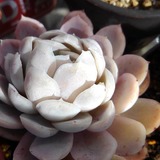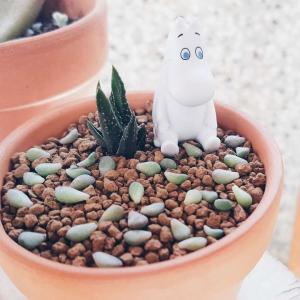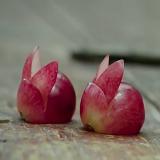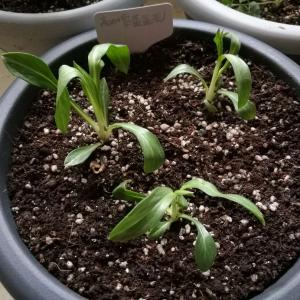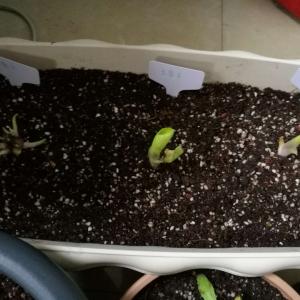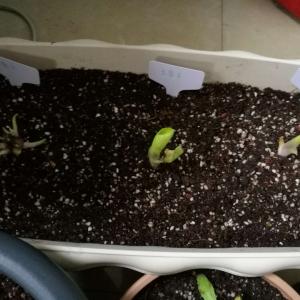成长记
楠楠
2018年04月24日

春天时候大约3月份剪掉很多枝条,原来的冬剪因为生宝宝没有操作,春天准备试试看,看来效果还是有的!下次更狠心才可以,花苞满足的!唯一郁闷的右边这颗就剩下一枝了!
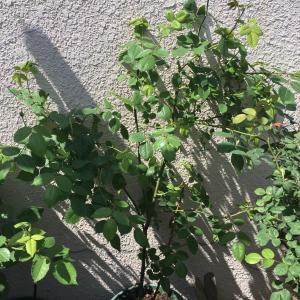
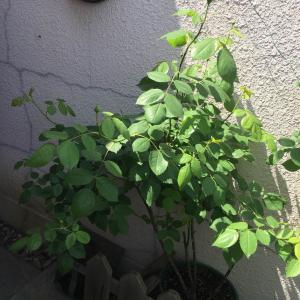
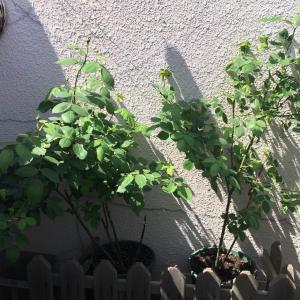
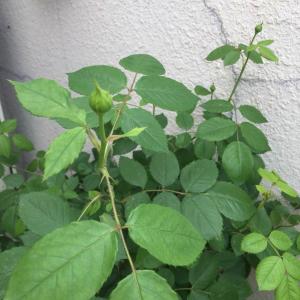
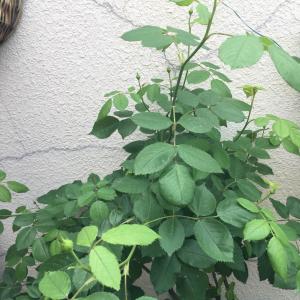
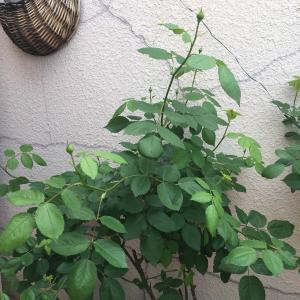
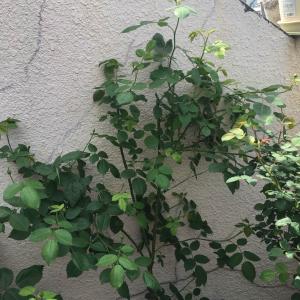
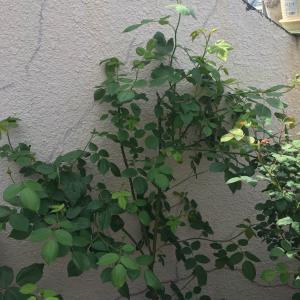








0
0
成长记
Shami
2018年04月23日

These are the regular sunflower I planted 2 or 3 days after the hybrid sunflowers.


0
0
文章
Miss Chen
2018年04月23日

Description: This perennial plant is 3-7' tall and usually unbranched, although short stems may develop from the leaf axils. The central stem is light green and stout; it has several flat ridges that are separated by narrow channels. The central stem is sparsely covered with stiff white hairs of variable length; these hairs can penetrate the skin and sting. Along the central stem are pairs of opposite leaves that droop downward slightly. The leaf blades are up to 8" long and 2½" across; they are medium to dark green, lanceolate, and coarsely serrated. The base of each leaf blade is rounded or slightly cordate. The upper surface of each leaf blade is heavily veined and glabrous, while the lower surface has sparse stiff hairs that can also sting. The slender petioles of the leaves are up to 1" long. At the base of each petiole, there is a pair of stipules up to ½" long.
Panicles of flowers develop from the axils of the middle to upper leaves. These panicles are much branched and droop downward; their pubescent branches are heavily covered with flowers. Slender Nettle is monoecious to slightly dioecious; some plants have male flowers entirely or predominantly, while other plants have female flowers entirely or predominately. The male flowers are 1/8" (3 mm.) across with 4 green sepals and 4 white stamens. The female flowers are 1/8" across with 4 green sepals; the 2 inner sepals that enclose the ovary are larger in size than the 2 outer sepals. The sepals of both male and female flowers are pubescent; neither kind of flower has petals. The blooming period occurs during the summer and can last 1-2 months for a colony of plants. Pollination of the flowers is by wind. The brown seeds are 1.0–1.5 mm. long and irregular in shape. They can remain viable in the ground for 10 years. The root system is fibrous and rhizomatous. Clonal colonies are often produced from the long rhizomes.

Cultivation: The preference is partial sun to light shade, moist to mesic conditions, and a fertile loamy soil. Most growth occurs during late spring and mid-summer. This plant can spread aggressively in favorable situations. The leaves are often attacked by insects.
Range & Habitat: The native Slender Nettle is occasional to locally common in central and northern Illinois, while in the southern section of the state it is uncommon or absent (see Distribution Map). Habitats include disturbed open woodlands, floodplain woodlands, woodland borders, thickets, meadows in wooded areas, partially shaded seeps, fence rows, and moist waste areas. Areas with a history of disturbance are preferred.

Faunal Associations: Caterpillars of the butterflies Vanessa atalanta (Red Admiral), Nymphalis milberti (Milbert's Tortoiseshell), Polygonia comma (Comma), and Polygonia interrogationis (Question Mark) feed on the foliage of Urtica spp. (nettles). Other insects that feed on nettles include leaf-mining larvae of the beetle Sumitrosis inaequalis, stem-boring larvae of the lizard beetle Acropteroxys gracilis, leaf-mining larvae of the midge Agromyza subnigripes, larvae of Dasineura urnicola (Nettle Urn Gall Midge), larvae of the moth Glyphipterix quadragintapunctata, and the leafhopper Empoasca vergena. The presence of stinging hairs in nettles provides some protection from the browsing of mammalian herbivores. Because Slender Nettle is relatively tall and often forms clonal colonies, it provides cover and protection for various insects, mammals, and birds.
Photographic Location: The edge of a woodland in Urbana, Illinois.

Comments: Slender Nettle is less heavily armed with stinging hairs than Urtica dioica (Stinging Nettle) and Laportea canadensis (Wood Nettle). Sometimes Slender Nettle is regarded as a variety of Stinging Nettle, in which case it is referred to as Urtica dioica gracilis. Stinging Nettle is adventive from Eurasia and has rarely naturalized in Illinois. It is shorter in stature and has wider leaves than Slender Nettle. The native Wood Nettle is similar in appearance to Stinging Nettle, except that it has alternate leaves. Unfortunately, these 3 species are often confused with each other. While many people dislike Urtica spp. (Nettles) and similar species because of their stinging hairs, they are important food plants to several species of butterflies. The young leaves of Nettles are edible if they are boiled in water and transformed into a creamy soup; they are supposed to be an excellent source of several vitamins and minerals.
Panicles of flowers develop from the axils of the middle to upper leaves. These panicles are much branched and droop downward; their pubescent branches are heavily covered with flowers. Slender Nettle is monoecious to slightly dioecious; some plants have male flowers entirely or predominantly, while other plants have female flowers entirely or predominately. The male flowers are 1/8" (3 mm.) across with 4 green sepals and 4 white stamens. The female flowers are 1/8" across with 4 green sepals; the 2 inner sepals that enclose the ovary are larger in size than the 2 outer sepals. The sepals of both male and female flowers are pubescent; neither kind of flower has petals. The blooming period occurs during the summer and can last 1-2 months for a colony of plants. Pollination of the flowers is by wind. The brown seeds are 1.0–1.5 mm. long and irregular in shape. They can remain viable in the ground for 10 years. The root system is fibrous and rhizomatous. Clonal colonies are often produced from the long rhizomes.

Cultivation: The preference is partial sun to light shade, moist to mesic conditions, and a fertile loamy soil. Most growth occurs during late spring and mid-summer. This plant can spread aggressively in favorable situations. The leaves are often attacked by insects.
Range & Habitat: The native Slender Nettle is occasional to locally common in central and northern Illinois, while in the southern section of the state it is uncommon or absent (see Distribution Map). Habitats include disturbed open woodlands, floodplain woodlands, woodland borders, thickets, meadows in wooded areas, partially shaded seeps, fence rows, and moist waste areas. Areas with a history of disturbance are preferred.

Faunal Associations: Caterpillars of the butterflies Vanessa atalanta (Red Admiral), Nymphalis milberti (Milbert's Tortoiseshell), Polygonia comma (Comma), and Polygonia interrogationis (Question Mark) feed on the foliage of Urtica spp. (nettles). Other insects that feed on nettles include leaf-mining larvae of the beetle Sumitrosis inaequalis, stem-boring larvae of the lizard beetle Acropteroxys gracilis, leaf-mining larvae of the midge Agromyza subnigripes, larvae of Dasineura urnicola (Nettle Urn Gall Midge), larvae of the moth Glyphipterix quadragintapunctata, and the leafhopper Empoasca vergena. The presence of stinging hairs in nettles provides some protection from the browsing of mammalian herbivores. Because Slender Nettle is relatively tall and often forms clonal colonies, it provides cover and protection for various insects, mammals, and birds.
Photographic Location: The edge of a woodland in Urbana, Illinois.

Comments: Slender Nettle is less heavily armed with stinging hairs than Urtica dioica (Stinging Nettle) and Laportea canadensis (Wood Nettle). Sometimes Slender Nettle is regarded as a variety of Stinging Nettle, in which case it is referred to as Urtica dioica gracilis. Stinging Nettle is adventive from Eurasia and has rarely naturalized in Illinois. It is shorter in stature and has wider leaves than Slender Nettle. The native Wood Nettle is similar in appearance to Stinging Nettle, except that it has alternate leaves. Unfortunately, these 3 species are often confused with each other. While many people dislike Urtica spp. (Nettles) and similar species because of their stinging hairs, they are important food plants to several species of butterflies. The young leaves of Nettles are edible if they are boiled in water and transformed into a creamy soup; they are supposed to be an excellent source of several vitamins and minerals.
0
0
文章
Miss Chen
2018年04月23日

Description: This perennial wildflower is 3-7' tall. It has a central stem that is unbranched below, becoming branched above. The stems are are usually purple, more or less terete, and either glabrous or minutely and sparingly pubescent. The alternate leaves are ternately compound; they are up to 2' long and across, becoming smaller as they ascend the stems. The lower leaves have long petioles, while the upper leaves have either short petioles or they are sessile. Individual leaflets are ¾-2" long and ½-1½" across; they are oblong-ovate or oblong-obovate in shape, while their margins are smooth and sometimes revolute (rolled downward). Individual leaflets usually have 2-3 lobes along their outer margins, but sometimes they are unlobed. The upper leaflet surface is medium green and glabrous, while the lower surface is either light green and glabrous or light grayish green and short-pubescent. The leaflets usually have short slender petiolules (basal stalklets), but sometimes the lateral leaflets in a group of 3 are sessile. The petioles, petiolules, and rachises are usually purple and glabrous, but sometimes they are light green, especially when a plant is growing in shade.
Because Purple Meadow Rue is dioecious, individual plants produce either all male (staminate) flowers or all female (pistillate) flowers. Regardless of gender, the central stem of a plant terminates in a panicle of flowers about ¾-2' long and about one-half as much across. In addition, smaller panicles of flowers are often produced from the axils of upper leaves. There is a tendency for female plants to produce smaller panicles than male plants. The branches of a panicle are usually purple and glabrous. Individual male flowers are about 1/3" (8 mm.) long, consisting of 4-5 deciduous sepals and up to 15 stamens; there are no petals. The filaments of the stamens are slender and white, while the anthers are pale yellow. Individual female flowers are about 1/3 (8 mm.) long, consisting of 4-5 deciduous sepals and up to 15 pistils; there are no petals. The pistils are light green. The blooming period occurs from early to mid-summer for about 2-3 weeks. The flowers are cross-pollinated by the wind. Afterwards, the female flowers are replaced by spindle-shaped achenes that turn brown at maturity. Each achene has a beak at its apex and 4-6 raised ribs along its sides. The root system is fibrous and rhizomatous. Clonal offsets are sometimes produced from the rhizomes.
Cultivation: The preference is full sun to light shade, wet to mesic conditions, and soil that is loamy, slightly sandy, or slightly rocky. The size of individual plants can vary significantly depending on environmental conditions. Generally, plants growing in sunlight require more moisture than plants growing in shade.

Range & Habitat: The native Purple Meadow Rue is occasional throughout Illinois; it is somewhat more common northward than southward within the state (see Distribution Map). This map refers only to the typical variety of this species. Habitats consist of river-bottom prairies, savannas and thickets, woodland borders, openings in wooded areas, wooded ravines, floodplain woodlands, swamps, and edges of fens. This wildflower has low fidelity to any particular habitat; sometimes it is found in sandy wetlands.
Faunal Associations: Even though honeybees and other bees are sometimes attracted to the abundant pollen of male flowers, the flowers of Purple Meadow Rue are not cross-pollinated by insects as its female flowers are devoid of nectar. There are relatively few insects that feed on the foliage, stems, and other parts of this and other Thalictrum spp. This select group of species includes the aphid Nasonovia purpurascens and caterpillars of the following oligophagous moths: Calyptera canadensis (Canadian Owlet), Eosphoropteryx thyatyroides (Pink-Patched Looper Moth), Pseudeva purpurigera (Straight-Lined Looper Moth), and Papaipema unimoda (Meadow Rue Borer Moth). Vertebrate animals make little use of Thalictrum spp. as sources of food, although White-Tailed Deer may browse on the foliage sparingly.

Photographic Location: Along a roadside at Cowle's Bog, Indiana Dunes National Lakeshore, in NW Indiana. This bog is actually a sandy marsh and fen. The photographed plant is the typical variety of Thalictrum dasycarpum.
Comments: Male plants have showier flowers than female plants. Purple Meadow Rue is very similar in appearance to another native species, Waxy Meadow Rue (Thalictrum revolutum), and the two species are easily confused. During the blooming period, the leaf undersides of the latter species are noticeably whitened and waxy in appearance, and they are covered with glandular hairs that glisten in the sunlight. Purple Meadow Rue, in contrast, has leaf undersides that are pale green to light grayish green, and they are either glabrous or covered with non-glandular hairs. For this species, plants with non-glandular hairs are referred to as Thalictrum dasycarpum dasycarpum, while plants that are hairless are referred to as Thalictrum dasycarpum hypoglaucum. Another difference between these two species consists of the following: During the blooming period, the crushed foliage of Waxy Meadow Rue has a skunk-like odor, while the crushed foliage of Purple Meadow Rue is essentially odorless.
Because Purple Meadow Rue is dioecious, individual plants produce either all male (staminate) flowers or all female (pistillate) flowers. Regardless of gender, the central stem of a plant terminates in a panicle of flowers about ¾-2' long and about one-half as much across. In addition, smaller panicles of flowers are often produced from the axils of upper leaves. There is a tendency for female plants to produce smaller panicles than male plants. The branches of a panicle are usually purple and glabrous. Individual male flowers are about 1/3" (8 mm.) long, consisting of 4-5 deciduous sepals and up to 15 stamens; there are no petals. The filaments of the stamens are slender and white, while the anthers are pale yellow. Individual female flowers are about 1/3 (8 mm.) long, consisting of 4-5 deciduous sepals and up to 15 pistils; there are no petals. The pistils are light green. The blooming period occurs from early to mid-summer for about 2-3 weeks. The flowers are cross-pollinated by the wind. Afterwards, the female flowers are replaced by spindle-shaped achenes that turn brown at maturity. Each achene has a beak at its apex and 4-6 raised ribs along its sides. The root system is fibrous and rhizomatous. Clonal offsets are sometimes produced from the rhizomes.
Cultivation: The preference is full sun to light shade, wet to mesic conditions, and soil that is loamy, slightly sandy, or slightly rocky. The size of individual plants can vary significantly depending on environmental conditions. Generally, plants growing in sunlight require more moisture than plants growing in shade.

Range & Habitat: The native Purple Meadow Rue is occasional throughout Illinois; it is somewhat more common northward than southward within the state (see Distribution Map). This map refers only to the typical variety of this species. Habitats consist of river-bottom prairies, savannas and thickets, woodland borders, openings in wooded areas, wooded ravines, floodplain woodlands, swamps, and edges of fens. This wildflower has low fidelity to any particular habitat; sometimes it is found in sandy wetlands.
Faunal Associations: Even though honeybees and other bees are sometimes attracted to the abundant pollen of male flowers, the flowers of Purple Meadow Rue are not cross-pollinated by insects as its female flowers are devoid of nectar. There are relatively few insects that feed on the foliage, stems, and other parts of this and other Thalictrum spp. This select group of species includes the aphid Nasonovia purpurascens and caterpillars of the following oligophagous moths: Calyptera canadensis (Canadian Owlet), Eosphoropteryx thyatyroides (Pink-Patched Looper Moth), Pseudeva purpurigera (Straight-Lined Looper Moth), and Papaipema unimoda (Meadow Rue Borer Moth). Vertebrate animals make little use of Thalictrum spp. as sources of food, although White-Tailed Deer may browse on the foliage sparingly.

Photographic Location: Along a roadside at Cowle's Bog, Indiana Dunes National Lakeshore, in NW Indiana. This bog is actually a sandy marsh and fen. The photographed plant is the typical variety of Thalictrum dasycarpum.
Comments: Male plants have showier flowers than female plants. Purple Meadow Rue is very similar in appearance to another native species, Waxy Meadow Rue (Thalictrum revolutum), and the two species are easily confused. During the blooming period, the leaf undersides of the latter species are noticeably whitened and waxy in appearance, and they are covered with glandular hairs that glisten in the sunlight. Purple Meadow Rue, in contrast, has leaf undersides that are pale green to light grayish green, and they are either glabrous or covered with non-glandular hairs. For this species, plants with non-glandular hairs are referred to as Thalictrum dasycarpum dasycarpum, while plants that are hairless are referred to as Thalictrum dasycarpum hypoglaucum. Another difference between these two species consists of the following: During the blooming period, the crushed foliage of Waxy Meadow Rue has a skunk-like odor, while the crushed foliage of Purple Meadow Rue is essentially odorless.
0
0
文章
Miss Chen
2018年04月23日

Description: This is a perennial plant that is about 2-3' tall. It has a stout central stem with four prominent ridges, while much smaller side stems may appear above the leaf axils in the upper half of the plant. The opposite leaves are up to 5" long and 2½" across. They are broadly ovate or lanceolate, coarsely serrated, and have deep venation. The lower leaves have short stout petioles, while the upper leaves are sessile. At the end of each stem is a terminal spike of numerous small flowers from 1-5" long. The flowers are white or light lavender with some purple near the base of the lower lip. Each flower is about 1/3" (8 mm.) long, with a greatly reduced upper lip and a long lower lip with a complicated structure. This lower lip functions as a landing pad for insect visitors, above which are two pairs of lateral petal-like extensions. The blooming period occurs from mid- to late summer, and lasts about 1½ months. There is no noticeable scent to the flowers. Each flower produces four round, coarsely pitted seeds with scattered white hairs. The root system is fibrous and rhizomatous. This plant spreads readily to form sizeable colonies.
Cultivation: The preference is full or partial sun, moist conditions, and a fertile loamy soil. American Germander can tolerate poorly drained conditions, but not much drought. It is occasionally bothered by foliar disease, particularly powdery mildew, when the plant is under stress, but not to the same degree as Wild Bergamot and other susceptible members of the Mint family. This plant can spread aggressively under moist conditions, and is rather weedy.
Range & Habitat: This is a common native plant that occurs in every county of Illinois (see Distribution Map). Habitats include moist black soil prairies, edges of bottomland forests, thickets, moist meadows along rivers, edges of marshes, and around seeps. American Germander can also be found in more developed areas, such as abandoned fields, partially shaded vacant lots, poorly drained waste areas, and along ditches near roads and railroads.

Faunal Associations: Long-tongued bees are the most important pollinators, including bumblebees, honeybees, Anthophorine bees, Cuckoo bees, Miner bees, and Leaf-Cutting bees. These bees collect pollen or suck nectar from the flowers. Other flower-visiting insects include Green Metallic bees, Bee flies, Thick-Headed flies, and various butterflies or skippers. Hummingbirds and Hummingbird moths are unusual visitors seeking nectar. Mammalian herbivores don't bother this plant because of the bitter leaves.
Photographic Location: The photographs were taken in a partially shaded waste area near a road in Urbana, Illinois.

Comments: This native plant is easy to confuse with other members of the Mint family, including the Eurasian species. It can be distinguished from all of them by the complicated structure of the long lower lip versus the greatly reduced size of the upper lip in the flowers. Some plants have a slight pubescence on the calyx and bracts, which are identified as var. boreale, while others lacking this pubescence are identified as var. virginicum. The former variety is absent from the southwestern counties of Illinois, while the latter variety occurs in every county. The unpleasant-tasting leaves were assumed to have medicinal value during pioneer days.
Cultivation: The preference is full or partial sun, moist conditions, and a fertile loamy soil. American Germander can tolerate poorly drained conditions, but not much drought. It is occasionally bothered by foliar disease, particularly powdery mildew, when the plant is under stress, but not to the same degree as Wild Bergamot and other susceptible members of the Mint family. This plant can spread aggressively under moist conditions, and is rather weedy.
Range & Habitat: This is a common native plant that occurs in every county of Illinois (see Distribution Map). Habitats include moist black soil prairies, edges of bottomland forests, thickets, moist meadows along rivers, edges of marshes, and around seeps. American Germander can also be found in more developed areas, such as abandoned fields, partially shaded vacant lots, poorly drained waste areas, and along ditches near roads and railroads.

Faunal Associations: Long-tongued bees are the most important pollinators, including bumblebees, honeybees, Anthophorine bees, Cuckoo bees, Miner bees, and Leaf-Cutting bees. These bees collect pollen or suck nectar from the flowers. Other flower-visiting insects include Green Metallic bees, Bee flies, Thick-Headed flies, and various butterflies or skippers. Hummingbirds and Hummingbird moths are unusual visitors seeking nectar. Mammalian herbivores don't bother this plant because of the bitter leaves.
Photographic Location: The photographs were taken in a partially shaded waste area near a road in Urbana, Illinois.

Comments: This native plant is easy to confuse with other members of the Mint family, including the Eurasian species. It can be distinguished from all of them by the complicated structure of the long lower lip versus the greatly reduced size of the upper lip in the flowers. Some plants have a slight pubescence on the calyx and bracts, which are identified as var. boreale, while others lacking this pubescence are identified as var. virginicum. The former variety is absent from the southwestern counties of Illinois, while the latter variety occurs in every county. The unpleasant-tasting leaves were assumed to have medicinal value during pioneer days.
0
0


